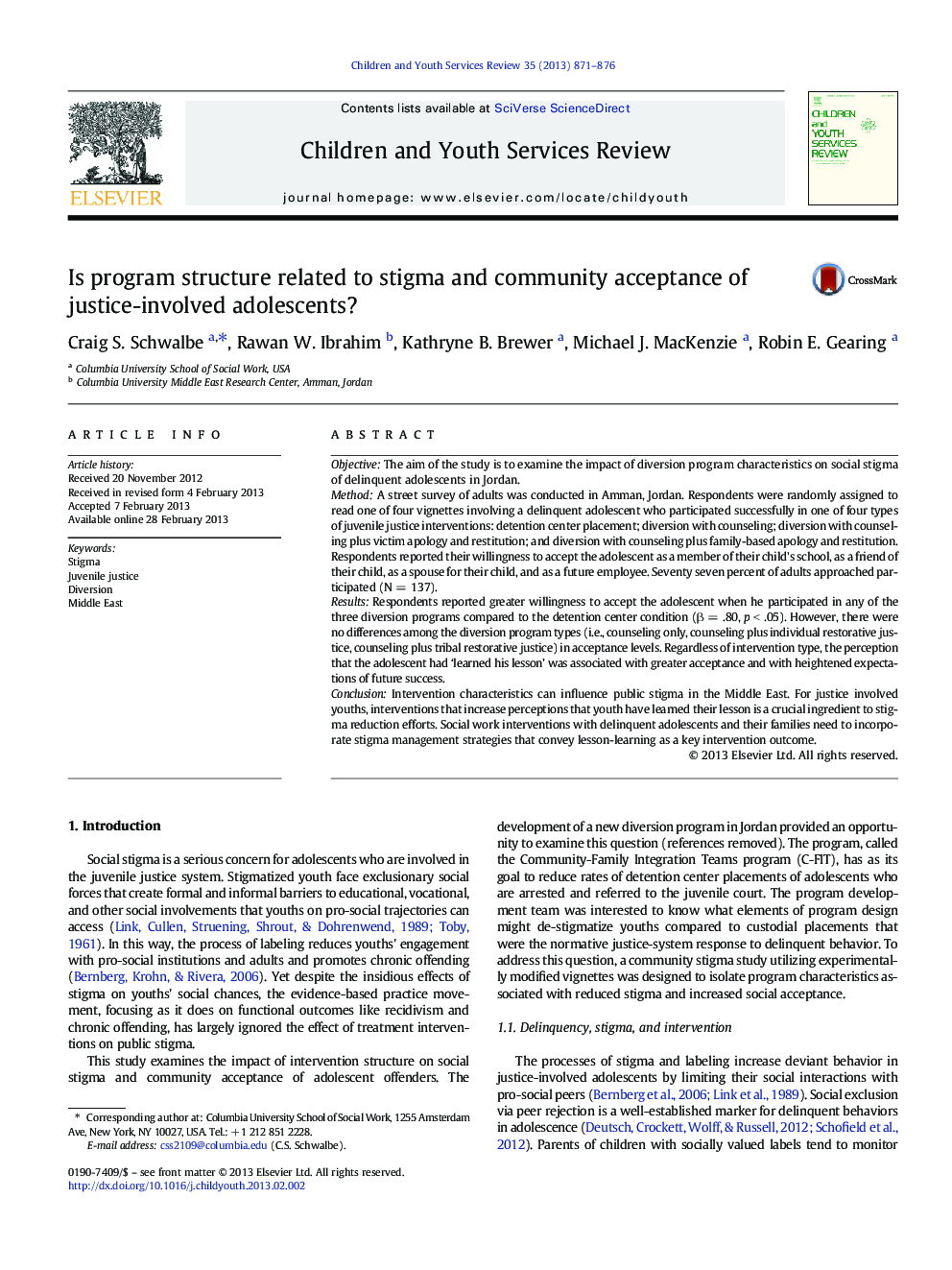| کد مقاله | کد نشریه | سال انتشار | مقاله انگلیسی | نسخه تمام متن |
|---|---|---|---|---|
| 346179 | 617803 | 2013 | 6 صفحه PDF | دانلود رایگان |

• The study tests the role of program structure on stigma for delinquent youth in Jordan.
• Participants viewed vignettes of a delinquent youth placed in diversion or detention.
• Diverted youth received higher acceptance ratings than detained youth.
• Whether youth ‘learned his lesson’ predicted acceptance regardless of placement type.
ObjectiveThe aim of the study is to examine the impact of diversion program characteristics on social stigma of delinquent adolescents in Jordan.MethodA street survey of adults was conducted in Amman, Jordan. Respondents were randomly assigned to read one of four vignettes involving a delinquent adolescent who participated successfully in one of four types of juvenile justice interventions: detention center placement; diversion with counseling; diversion with counseling plus victim apology and restitution; and diversion with counseling plus family-based apology and restitution. Respondents reported their willingness to accept the adolescent as a member of their child's school, as a friend of their child, as a spouse for their child, and as a future employee. Seventy seven percent of adults approached participated (N = 137).ResultsRespondents reported greater willingness to accept the adolescent when he participated in any of the three diversion programs compared to the detention center condition (β = .80, p < .05). However, there were no differences among the diversion program types (i.e., counseling only, counseling plus individual restorative justice, counseling plus tribal restorative justice) in acceptance levels. Regardless of intervention type, the perception that the adolescent had ‘learned his lesson’ was associated with greater acceptance and with heightened expectations of future success.ConclusionIntervention characteristics can influence public stigma in the Middle East. For justice involved youths, interventions that increase perceptions that youth have learned their lesson is a crucial ingredient to stigma reduction efforts. Social work interventions with delinquent adolescents and their families need to incorporate stigma management strategies that convey lesson-learning as a key intervention outcome.
Journal: Children and Youth Services Review - Volume 35, Issue 5, May 2013, Pages 871–876